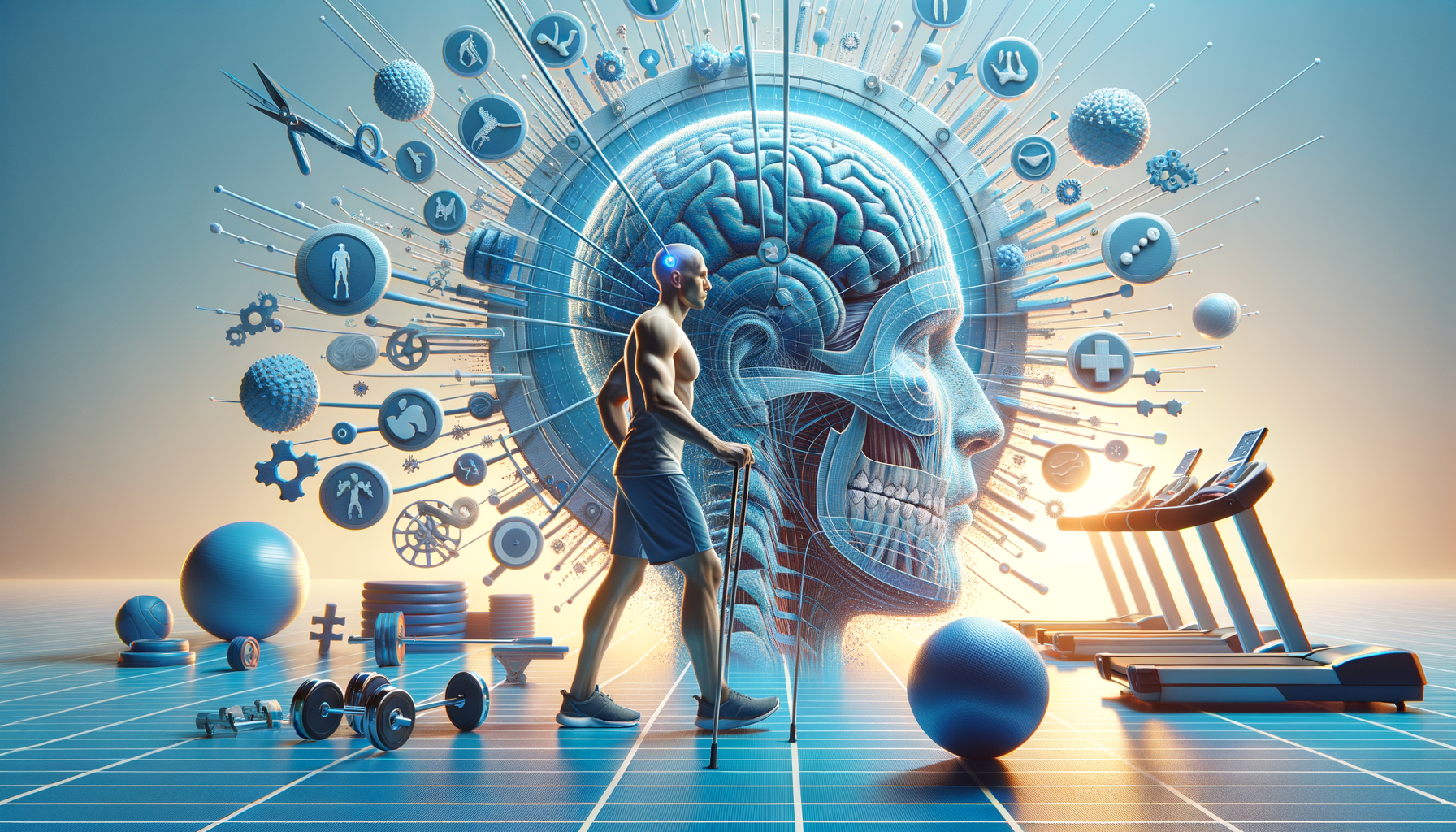Understanding the Impact of Stroke on the Body
Stroke is a leading cause of serious long-term disability worldwide, affecting millions of individuals annually. The aftermath of a stroke can vary greatly, depending on the severity and the area of the brain affected. Common challenges include impaired mobility, weakness, and reduced coordination, which can significantly impact daily living activities. Understanding the specific effects of a stroke is crucial for tailoring rehabilitation efforts effectively.
Post-stroke rehabilitation is a critical component in the recovery process, aiming to help individuals regain as much functionality as possible. It involves a combination of medical intervention, physical therapy, and targeted exercises designed to address the unique needs of each patient. The brain’s ability to adapt and reorganize itself, known as neuroplasticity, plays a pivotal role in recovery, making consistent and focused rehabilitation efforts essential.
Key areas often affected by a stroke include:
- Motor skills: Difficulty in moving limbs, maintaining balance, or coordinating movements.
- Speech and language: Challenges in speaking, understanding, reading, or writing.
- Emotional and cognitive functions: Issues with memory, problem-solving, and emotional regulation.
Recognizing these impacts allows healthcare providers and patients to develop a comprehensive rehabilitation plan that addresses both physical and cognitive challenges, paving the way for a more effective recovery journey.
The Role of Physical Therapy in Stroke Rehabilitation
Physical therapy is often at the forefront of stroke rehabilitation, providing structured programs that focus on improving mobility and strength. Therapists work closely with patients to create personalized exercise regimens that encourage gradual progress and adaptation. These exercises are designed to enhance muscle strength, improve balance, and increase overall endurance.
One of the primary goals of physical therapy is to help patients regain independence in daily activities. This is achieved through a variety of exercises, including:
- Range-of-motion exercises to reduce stiffness and increase flexibility.
- Strength training to rebuild muscle mass and improve functional movements.
- Balance and coordination exercises to prevent falls and promote stability.
Physical therapists also employ techniques such as constraint-induced movement therapy, which encourages the use of the affected limb by restricting the unaffected one, thereby promoting recovery through repetitive use. This approach leverages the brain’s neuroplasticity, encouraging new neural pathways to form and enhance motor function.
Overall, physical therapy is a cornerstone of post-stroke rehabilitation, providing the guidance and support necessary for patients to regain their strength and confidence in their abilities.
Effective Home Exercises for Post-Stroke Recovery
In addition to professional therapy sessions, home exercises play a vital role in post-stroke rehabilitation. These exercises allow patients to reinforce the skills learned in therapy and maintain progress between sessions. Consistency is key, as regular practice helps strengthen neural pathways and improve physical capabilities.
Some effective home exercises include:
- Seated marching: While sitting, lift each knee alternately to mimic a marching motion, which helps improve hip flexibility and leg strength.
- Heel slides: Lying on your back, slide one heel towards your buttocks and back to the starting position, enhancing knee mobility.
- Arm raises: With the affected arm, practice lifting it overhead and lowering it slowly to improve shoulder mobility and strength.
These exercises are designed to be simple yet effective, allowing patients to perform them independently with minimal equipment. It’s crucial to follow the guidance of healthcare providers to ensure exercises are performed correctly and safely, minimizing the risk of injury.
By integrating these exercises into daily routines, patients can actively participate in their recovery, fostering a sense of empowerment and motivation to continue progressing.
Harnessing Technology in Stroke Rehabilitation
Advancements in technology have significantly enhanced the scope and effectiveness of post-stroke rehabilitation. From virtual reality to wearable devices, these innovations offer new ways to engage patients and track their progress in real-time.
Virtual reality (VR) systems provide immersive environments where patients can practice movements and tasks in a controlled setting. This technology not only makes rehabilitation more engaging but also allows therapists to tailor programs to the specific needs of each patient. VR exercises often simulate real-world scenarios, helping patients regain confidence in their abilities.
Wearable devices, such as smartwatches and fitness trackers, offer valuable insights into a patient’s activity levels and overall health. These devices can monitor heart rate, steps taken, and even detect irregular movements, providing data that helps therapists adjust rehabilitation plans as needed.
Tele-rehabilitation is another promising development, allowing patients to connect with therapists remotely. This approach is particularly beneficial for those with mobility challenges or those living in remote areas, ensuring they receive consistent support and guidance.
By incorporating technology into rehabilitation programs, healthcare providers can offer more personalized and effective care, ultimately improving outcomes for stroke survivors.
Building a Supportive Environment for Recovery
The journey to recovery after a stroke extends beyond physical exercises and therapy sessions. Creating a supportive environment is crucial for fostering a positive mindset and encouraging continued progress. Family members, caregivers, and healthcare providers all play a vital role in this aspect of rehabilitation.
Support can come in many forms, including:
- Emotional support: Encouragement and understanding from loved ones can boost morale and motivation.
- Practical assistance: Helping with daily tasks or accompanying patients to therapy sessions can ease the recovery process.
- Educational resources: Providing information about stroke recovery and available resources can empower patients and their families.
Community support groups also offer valuable opportunities for stroke survivors to connect with others facing similar challenges. Sharing experiences and advice can foster a sense of camaraderie and reduce feelings of isolation.
Ultimately, a supportive environment enhances the effectiveness of rehabilitation efforts, helping patients navigate the path to recovery with confidence and resilience.




Leave a Reply